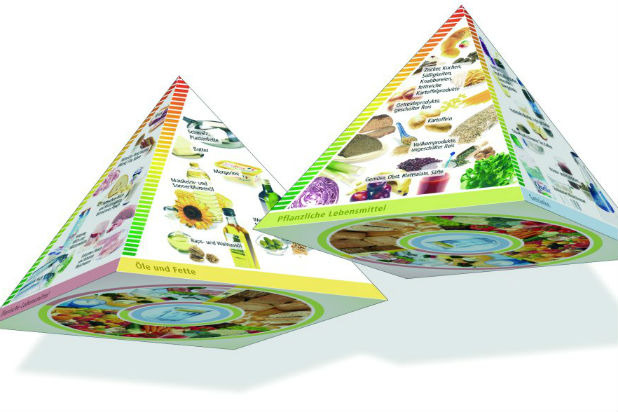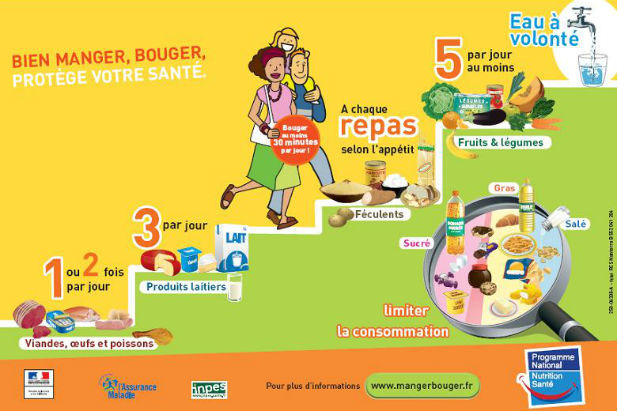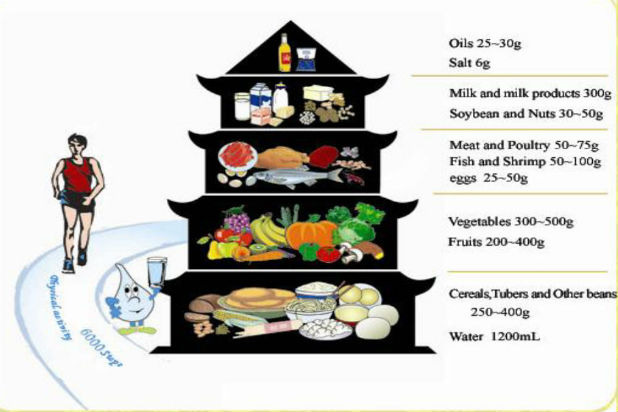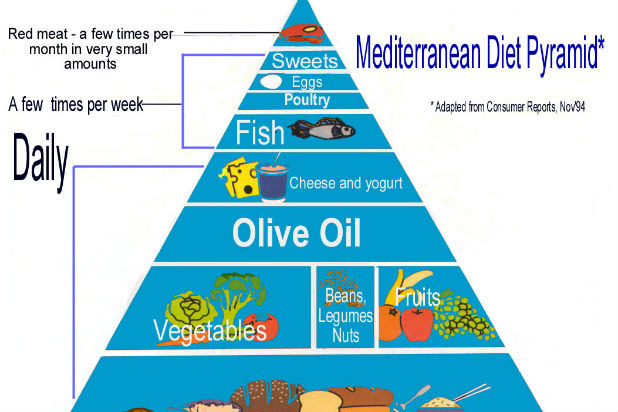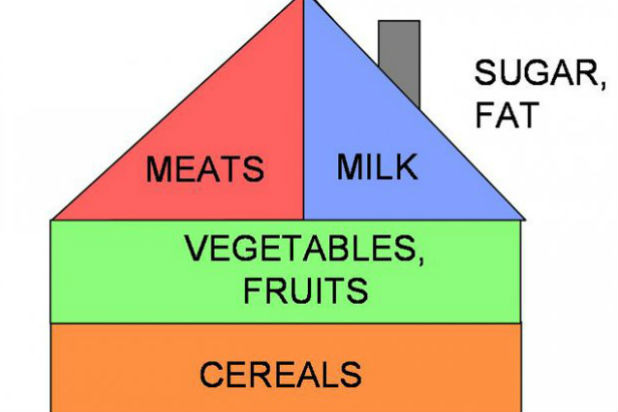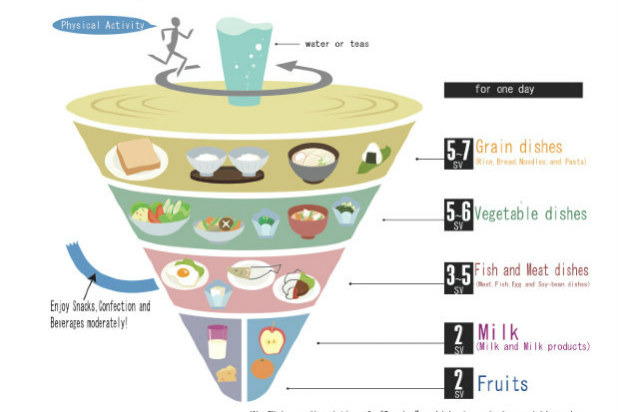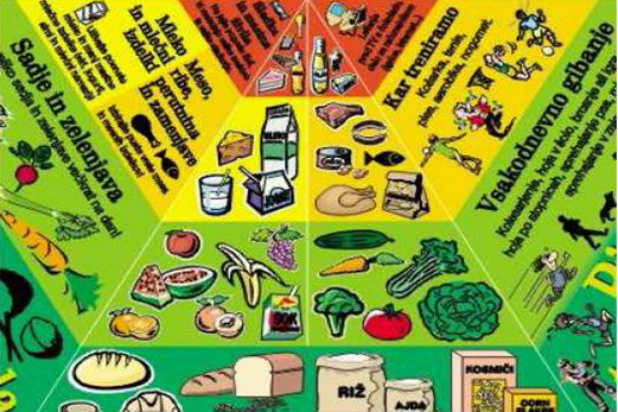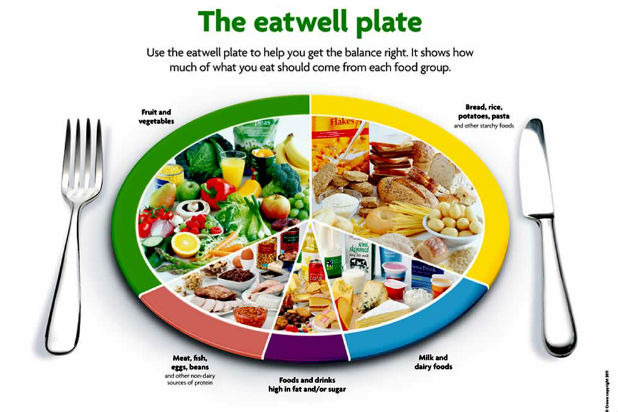Food Pyramids Around The World (Slideshow)
The German food guidelines are a technological marvel. By upgrading the traditional food pyramid to a 3D design, they can incorporate much more detail on the food groups as well as more information on their 10 nutritional guidelines. Each side of the pyramid is broken into a separate food group, which is then broken further into units to show the suggested intake for each food collection. It also works with ratios between proteins, fats, and carbohydrates so each meal can be balanced appropriately, regardless of how much you're eating as a whole.
Food Stairs — France
The French have a staircase with nine stairs/rules. The foods you should eat the least of are at the bottom of the stairs, and those you can eat the most of are at the top of the stairs. There's also a tap with running water at the top of the stairs to emphasize hydration... like the fountain of life! There's also an accompanying magnifying glass which shows you which foods you should be eating very little of (sugars, processed foods, etc.). Don't forget the happy family running to the top of the stairs: exercise is the key to healthy diets. The guidelines also recommend eating starchy foods depending on your appetite, so eat a lot when you're hungry and stop when you aren't... that's the hallmark of French eating.
Food Pagoda — China
At a quick glance it may look the Chinese pictographic is just riffing off the traditional food pyramid used elsewhere in the world... but look closely and you'll see some important differences. There's a very big difference in the Chinese diet between meat and vegetable protein sources. They've also skipped the "servings" in favor of showing how much to eat from each group. There's also more sweet potato, soybean, and lentils which is more culturally specific to the Chinese diet than more general food pyramids.
Food Pyramid (Mediterranean Diet) — Greece
While this Greek pyramid may look like the traditional one we know, it's actually based off the Mediterranean diet incorporating olive oil, seasonal fruits and vegetables, and seafood. The popularity of the Mediterranean diet is gaining in traction so more people outside of Greece are following this meal plan instead of the one suggested by their own country. It is broken down into 12 food groups with advice on consumption.
Food House — Hungary
On the surface it may look a little like the orphanage Oliver Twist lived in, but this food model actually represents a family home that incorporates good eating habits. The "house" has five simple food groups, the same as the traditional food pyramid. Much of the information advising on regular meal sizes and supplementary diet tips, though, are in the accompanying information and not on the actual food "pyramid."
Spinning Top — Japan
Japan decided to have a little fun with its nutritional guidelines: they've flipped the food pyramid upside down and spun it around, giving new meaning to playing with your food! From bottom to the top, in super small amounts, are fruits and dairy products, fish and meat dishes, vegetable dishes, then the top (the bulk of your diet) should be grains and breads. And the spinning part? Well, there's a little guy standing on the top running around to keep it spinning, emphasizing the role of exercise in any healthy diet.
3D Food Pyramid Map — Slovenia
This Slovenian food pyramid took a page out of the German model of a 3D pyramid... meaning it literally took a 3D model and flattened it on a page. Theirs holds a lot of condensed information and it's a little difficult to suss out, but the general idea is that there are seven separate groups (if you can find them) and another one specifically for exercise. There's also a lot of information on how to and how much of each of these to eat.
Eatwell Plate — U.K.
Great Britain and Ireland have also decided to ditch the traditional food pyramid in favor of the Eatwell Plate, which used to be known as The Balance of Good Health. It looks remarkably similar to the U.S.'s MyPlate pictogram, though this one is divided into five categories with plenty of fruits, vegetables, and grains and less sugars and fats. It comes with some additional advice you can wash down with your milk (or calcium-fortified soy milk): Limit your salt intake substantially, and also drink at least six to eight glasses of water a day.
